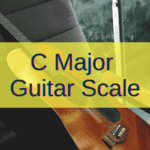Jazz is a musical style characterized by the number of chords being played.
Yes, if you close your eyes and think of a jazz master playing, you can surely see someone like Wes Montgomery rubbing his thumb gently over a set of flat-wound strings on his amazing Gibson L-5 and playing a beautiful and endless succession of chords.
Yet, for all those who don’t play jazz that “succession of chords” seems like Mission: Impossible. Yes, the endless stream of 4-note chords makes all progressions seem like hieroglyphs.
If you’re going through such a phase in your career as a guitarist, worry not; you’re in the right place. We are going to go through the most important chords every jazz guitar player needs to know and master.
Go get your six-stringer and stretch your fingers, because the game is on.
4 Notes vs. 3 Notes or the World against Jazz
Most of the music we hear every day is made of 3-note chords.
Furthermore, if you’re a punk rocker and your favorite artists play 5ths; you might have been enjoying 2-note chords for a while there.
In jazz, things grow by one dimension, and, most chords are embellished with a fourth note that changes their character entirely.
But that’s not all, because the extra note changes the chord’s function as well as its color and flavor.
The world uses three dimensions for music with seldom inclusions of a fourth-dimensional warrior in the shape of a seventh chord. Jazz, on the other hand, is made entirely of four-dimensional warriors.
Let’s go over the basic chords for you to make your way into jazz guitar playing.
Let me warn you, though, that the road to jazz chord mastery is long and full of oddness.
Let’s get that journey going with the indispensables in this endless fight of the world against jazz.
Major 7th chords
While most pop, blues, and rock songs play major chords with three notes, jazz always adds the fourth dimension, hence, we play major seventh chords.
But how do you put together a major seventh chord? Well, very simply; you just stack up the tonic, the third, the fifth, and the seventh.
The formula goes: 1 – 3 – 5 – 7
So, if we were going for the quintessential scale, the C major scale, this chord will be:
CMaj7= C – E – G – B
What about moving to other scales, like D and E? What we get with the same formula is:
DMaj7= D – F# – A – C#
EMaj7= E – G# – B – D#
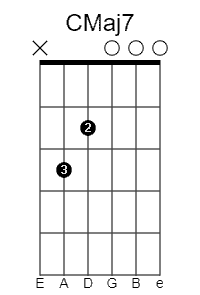

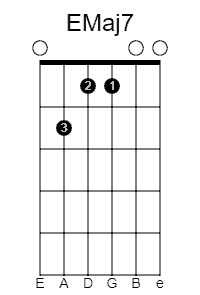
So, every time there’s a major chord in your progression, you can play a major seventh to activate the jazz-approved fourth dimension.
Dominant 7th Chords
Dominant seventh chords are a very different race of seventh chords when compared to major seventh chords.
The big difference comes from the added note to become a four-dimensional chord.
While we put together the major seventh chord by stacking the tonic, the third, the fifth, and the seventh; to put together a dominant seventh chord, we need the tonic or root, the third, the fifth, and a flat seventh.
This flat seventh makes the dominant seventh chord a great go-home choice because it urges you to go back to the root or tonic when in a chord progression.
This quality of dominant 7th chords makes them the most common seventh chord to find outside jazz. Yes, whenever you see a chord with just a seven next to its name, it’s a dominant seventh.
This flat seventh is like injecting steroids into the natural quality of the dominant chord in any scale.
So, for example, if you play a C7, you’ll be urged to go back to F, the root of the scale.
The formula is: 1 – 3 – 5 – 7b
Again, pouring that into C, D, and E scales, we have:
C7= C – E – G – Bb
D7= D – F# – A – C
E7= E – G# – B – D

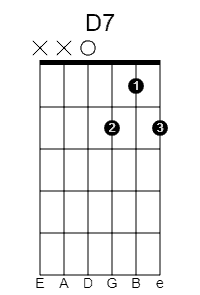
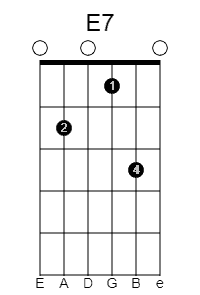
Minor 7th chords
Just like we said that every major chord had its alter ego in the fourth dimension and it could be called a major seventh chord, we can also talk about the minor seventh chord.
Likewise, you can replace any and all minor chords in any jazz progression for a minor seventh chord.
So, as you might know, to turn a chord into its minor alter ego, you have to turn the third into a flat third.
So, in this iteration of the chord, what we do is turn the third and seventh into a flat third and a flat seventh.
Thus, to form a minor seventh chord we stack the root, a flat third, the fifth, and the flat seventh.
So, turning that into a formula gives us: 1 – 3b – 5 – 7b
Again trying to make a C, D, and E minor 7th, what we get is:
Cmin7= C – Eb – G – Bb
Dmin7= D – F – A – C
Emin7= E – G – B – D
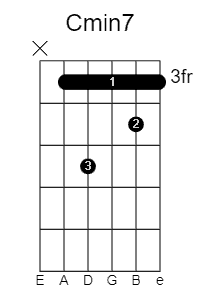

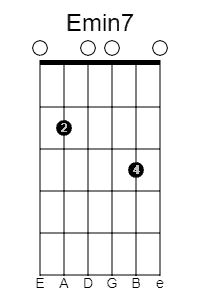
Half-Diminished 7th chords
A half-diminished chord is, basically, a minor seventh chord with a flat fifth.
Since that’s their “scientific” name, you can also come across them as minor seventh flat five chords (m7b5).
Whichever name they receive, they are of paramount importance for jazz players since they’re very often used as the opening chord whenever a minor ii-V-I chord progression is used.
So, to create this chord you need to follow the same formula as above but transform the fifth into a flat fifth.
That leaves us with the following formula: 1 – b3 – b5 – b7.
Let’s use it to create a Cm7b5, Dm7b5, and Em7b5:
Cm7b5: C – Eb – Gb – Bb
Dm7b5: D – F – Ab – C
Em7b5: E – G – Bb – D
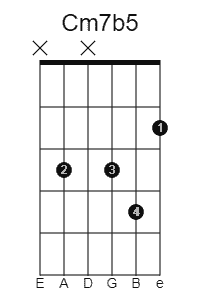

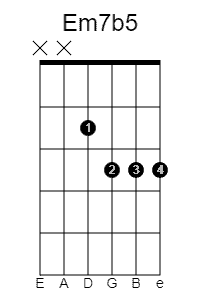
Diminished 7th chords
We saw the “half” version of this chord, but it’s time to see it in its fullest splendor.
Yes, the diminished seventh chords differ from the half-diminished or minor seventh flat five (m7b5) by one note. Yet, this note changes the color of the chord completely.
So, in the last example, we had a minor seventh, but here we have a diminished seventh.
The difference is, as we said before, a semi-tone.
But that’s not all, because another curiosity about diminished 7th chords is that they are symmetrical.
This means they are based on dividing an octave into four exact minor third intervals.
Translating this into layman’s terms; there are four chords in every position.
For example, our Cdim7 chord is: C – Eb – Gb – A. Using the same notes, we can put together Ebdim7: Eb – Gb – A – C.
But if we recycle the same notes, we can also get Gbdim7: Gb – A – C – Eb and Admi7: A – C – Eb – Gb.
Yes, these chords are super handy to learn.
The formula is 1 – b3 – b5 – bb7.
Pouring the C, D, and E scales inside that formula, we get:
Cdim7: C – Eb – Gb – A
Ddim7: D – F – Ab – B
Edim7: E – G – Bb – Db
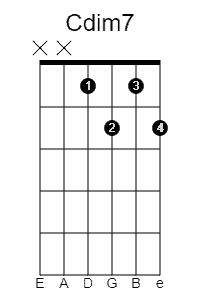
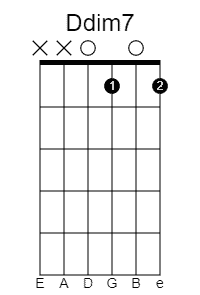
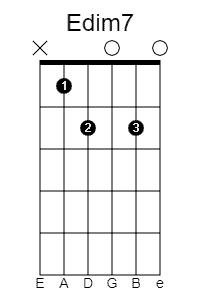
9th Chords
The 9th chords we’re about to see are not to be confused with add9 or major 9th chords.
We’re going to see dominant 9th chords, which are the most suitable for a jazz environment.
But how do we put together a 9th chord if a key has seven natural notes?
Well, we count nine from the beginning and start again after seven.
That gives us a five-note chord with this formula: 1 – 3 – 5 – b7 – 9
In the same way, we don’t say dominant 7 and just write a 7 next to the chord, here we won’t say dominant ninth but just ninth and write a 9 next to the chord name.
Since it is a dominant chord, playing it in the V position of the scale with the seventh and ninth will increase the sense of urgency to go back to the I.
What happens if we pour the C, D, and E scales over this formula?
C9: C – E – Bb – D
D9: D – A – C – E
E9: E – G# – D – F#

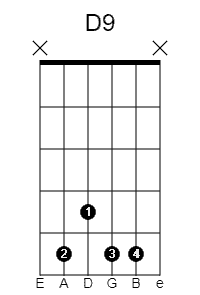
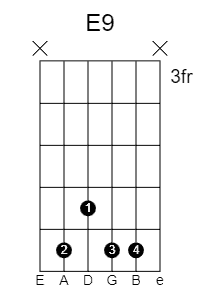
13th Chords
The 13th chords we’re about to see follow the same rules as the 9th chords but with two additional stacked thirds (11th and 13th).
Normally, the interval 3-11 is dissonant and tends to be avoided.
Also, the fifth doesn’t add so much to the chord’s sound and can be left out as well.
This is another dominant chord, so you can use it in the V position to increase the urge to go home to the tonic.
The formula is: 1 – 3 – 5 – b7 – 9 – 11 – 13
We don’t have that many fingers, so we’ll use 1 – 3 – b7 – 13
C13: C – E – Bb – A
D13: D – F# – C – B
E13: E – G# – D – C#
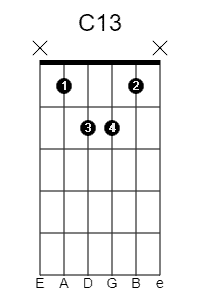

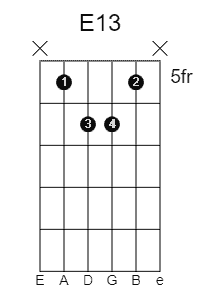
The Bottom End
The title of this post is quite a chimera, but we always aim for utopia and end up achieving excellence.
In other words, there’s no such thing as easy jazz chords, but these can be the foundational stones to build a prosperous career on.
Learn them and play your heart out using this new language.
Happy playing!

Hello there, my name is Ramiro and I’ve been playing guitar for almost 20 years. I’m obsessed with everything gear-related and I thought it might be worth sharing it. From guitars, pedals, amps, and synths to studio gear and production tips, I hope you find what I post here useful, and I’ll try my best to keep it entertaining also.


